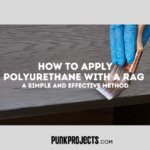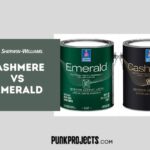When it comes to protecting and enhancing wooden surfaces and Apply Polyurethane with a Rag, polyurethane is a popular choice. While brushes are commonly used for applying polyurethane, using a rag can be a practical and efficient alternative.
In this article, we’ll guide you through the easy process on troubleshooting of applying polyurethane with a rag, allowing you to achieve a smooth and professional finish on your woodworking projects.
What is Polyurethanes?
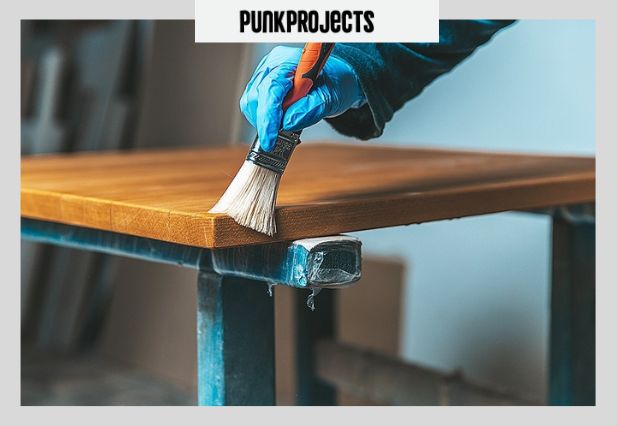
Polyurethanes are a type of material that has many different uses and benefits. They are known for being strong, flexible, and long-lasting. You can find polyurethanes in various products like coatings, adhesives, foams, and sealants. They are used to protect surfaces, improve the performance of materials, and provide insulation.
Whether it’s in furniture, buildings, cars, or even medical equipment, polyurethanes are everywhere and contribute to making things more durable and efficient. So next time you come across a product with polyurethane, you’ll know that it’s a versatile material that brings strength and reliability to the table.
Benefits Applying Polyurethane with a Rag
Applying polyurethane with a rag is one method of applying a protective finish to wood surfaces.
This technique is often chosen when working on smaller projects or intricate areas where using a brush or spray may be difficult. Check also: Staining Hardwood Floors Darker Without Sanding
Here are some reasons why applying polyurethane with a rag can be advantageous:
1. Control
One of the main advantages is the level of control it provides. With a rag, you have more flexibility and precision in applying the polyurethane onto your desired surface.
Whether you’re working on a small piece of furniture or a large wooden floor, using a rag allows you to easily maneuver around corners and edges.
2. Smoother finish
Additionally, applying polyurethane with a rag results in a smooth and even finish. The texture of the cloth helps to spread the product evenly across the surface without leaving any streaks or bubbles behind.
This not only enhances the overall appearance but also ensures better protection for your furniture or flooring against wear and tear.
3. Absorption
The porous nature of the cloth enables it to absorb excess product, preventing drips and runs that can mar the final finish. This ensures an even and smooth application, resulting in a professional-looking outcome that enhances the beauty of any woodwork or furniture.
Additionally, applying polyurethane with a rag minimizes waste as compared to other application tools such as brushes or foam pads.
The absorptive properties of the cloth allow for efficient use of the product by evenly distributing it onto the surface without wasting excess amounts. This not only saves money but also reduces environmental impact by minimizing unnecessary consumption.
4. Accessibility
One of the major advantages of using a rag to apply polyurethane is its accessibility. Unlike brushes or foam applicators, which require careful cleaning and maintenance after each use, rags are easily available and disposable.
This makes them more cost-effective in the long run as they eliminate the need for investing in expensive brushes or constantly replacing worn-out foam applicators.
3 Best Polyurethanes
With numerous options available in the market, finding the best polyurethane product can be daunting. To simplify your search, we have done the research and curated a list of the top three polyurethane coatings available today.
Whether you’re refinishing furniture or protecting an outdoor deck, these highly rated polyurethanes will exceed your expectations. Continue reading to discover the top picks on our list of the 3 Best Polyurethane coatings!
1. Minwax 63333 Clear Polycrylic Water-Based Protective Finish Satin
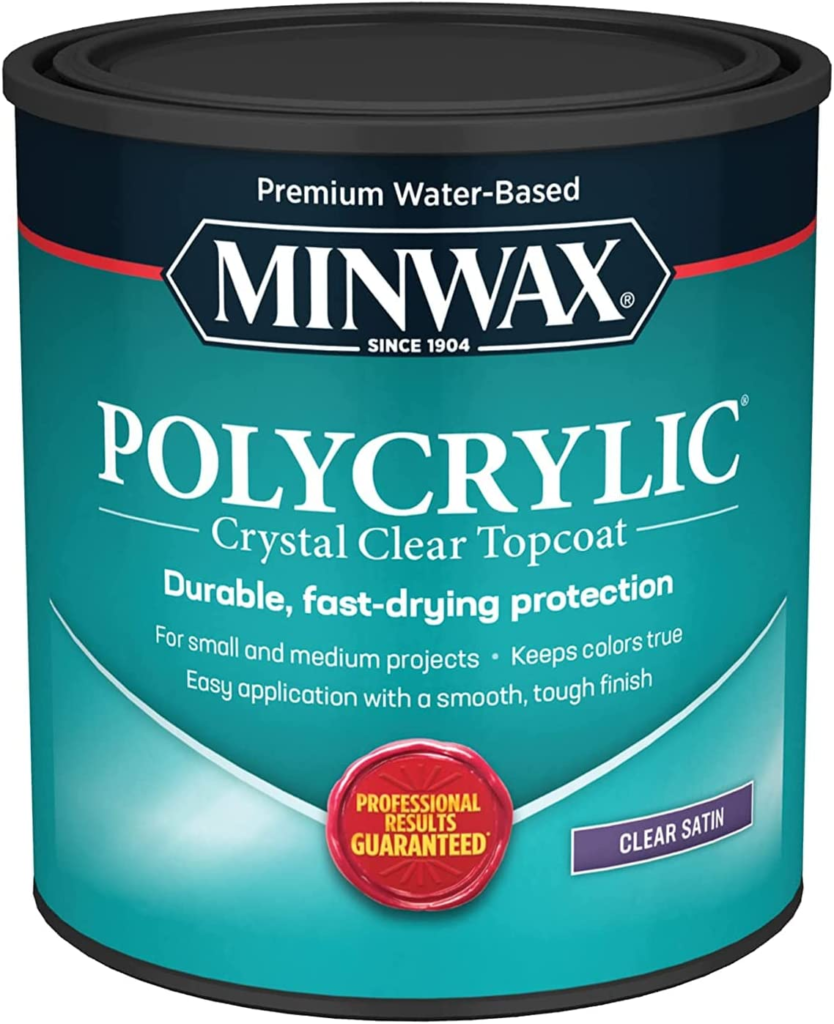
Minwax 63333 Clear Polycrylic is a fantastic water-based protective finish that adds a beautiful satin sheen to surfaces. It’s incredibly durable, guarding against scratches, stains, and moisture.
The best part is that it’s easy to apply, dries quickly, and won’t turn yellow over time. Whether you’re working on furniture or cabinets indoors, this clear polyurethane provides a long-lasting, transparent shield that keeps your surfaces looking their best.
2. Minwax Fast Drying Polyurethane Protective Wood Finish

Minwax Fast Drying Polyurethane is a top-quality protective wood finish that enhances the natural beauty of wood while providing excellent durability. It dries quickly, allowing for multiple coats in one day, and offers strong resistance against scratches, stains, and household chemicals.
With its clear and glossy finish, it adds a stunning touch to any wood project. Perfect for furniture and cabinets, Minwax Fast Drying Polyurethane is a reliable choice for achieving beautiful and long-lasting results.
3.General Finishes High Performance Water Based Topcoat

The General Finishes High Performance Water Based Topcoat is a fantastic choice for adding a protective finish to your woodworking projects. It offers excellent durability and water resistance, ensuring that your furniture or other wooden surfaces stay protected and looking beautiful.
With its easy application and clear, non-yellowing formula, you can trust that your project will have a professional-quality finish that lasts. Whether you’re a woodworking enthusiast or a professional craftsman, this topcoat is a reliable and popular option for achieving stunning results. Check also: How to Repair Swollen Laminate Flooring without Replacing.
Applying Polyurethane with a Rag: A Simple Guide
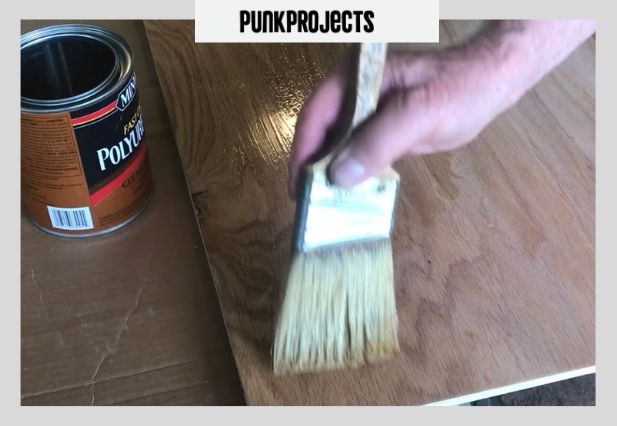
Here are some tips on applying Polyurethane with a Rag:
Step 1: Prepare the Surface
Before you begin, ensure that the wood surface is clean, smooth, and free from any dust or debris. If needed, give it a light sanding to create a smooth foundation for the polyurethane.
Step 2: Choose the Right Rag
Select a lint-free rag that is suitable for applying finishes. Old cotton t-shirts or lint-free cloths work well for this purpose. Avoid using rags that may leave behind fibers or lint, as they can affect the quality of the finish.
Step 3: Prep the Polyurethane
Pour the desired amount of polyurethane into a separate container. Gently stir the polyurethane to mix it thoroughly, being careful not to introduce air bubbles. Follow the manufacturer’s instructions if thinning the polyurethane is necessary.
Step 4: Dampen the Rag
Dip a corner of the rag into the container of polyurethane. Wring out any excess liquid, ensuring that the rag is damp but not dripping. Applying too much polyurethane can result in an uneven finish and longer drying time.
Step 5: Apply the Polyurethane
Start applying the polyurethane to the wood surface using smooth and even strokes, following the direction of the wood grain. Work in small sections at a time, slightly overlapping each stroke to achieve a consistent finish. Avoid applying excessive pressure, as it can c
ause streaks or bubbles.
Step 6: Drying and Sanding (Optional)
Allow the first coat of polyurethane to dry completely according to the manufacturer’s instructions. If desired, lightly sand the surface with fine-grit sandpaper between coats to ensure a smooth finish. Wipe away any sanding dust using a clean, dry cloth before applying additional coats.
Step 7: Apply Additional Coats (Optional)
For a more durable finish, apply additional coats of polyurethane following the same process described above. Allow each coat to dry thoroughly before applying the next one. If needed, lightly sand between coats to achieve the desired smoothness.
Step 8: Clean Up
Once you’ve completed the application process, make sure to properly dispose of used rags in accordance with local regulations. Rags soaked in polyurethane can be a fire hazard, so it’s important to store or dispose of them safely.
By following these simple steps, you can easily achieve a professional-looking finish by applying polyurethane with a rag. Enjoy the satisfaction of protecting and enhancing your wooden projects using this versatile and user-friendly technique. Check also: Why Is Kilz Not Recommended For Flooring?
Materials to Applying Polyurethane
When it comes to applying polyurethane with a rag, you’ll need a few basic materials to get started. Here’s a list of what you’ll need:
- Polyurethane: Choose a high-quality polyurethane that suits your project. You can find different finishes like satin, semi-gloss, or gloss. Make sure to pick the right type for the desired look you want to achieve.
- Rag: Grab a lint-free rag or cloth that’s suitable for applying finishes. You can use old cotton t-shirts, lint-free cloths, or shop towels. Just make sure they won’t leave behind fibers or lint that can ruin the finish.
- Container: Prepare a separate container to pour the polyurethane into. This will make it easier to access during the application process. A small paint tray or a disposable container will do the trick.
- Stir Stick: Use a stir stick or paint stirrer to gently mix the polyurethane before applying it. This ensures that the polyurethane is well-mixed and any settled particles are evenly distributed.
- Sandpaper (optional): Depending on your project, you may need sandpaper of different grits. Fine-grit sandpaper like 220 or higher can be used for sanding between coats to achieve a smooth finish. Have a sanding block or sanding sponge on hand for convenience.
- Clean, dry cloth: Keep a clean, dry cloth nearby for wiping away any excess polyurethane, cleaning up spills, and general maintenance throughout the application process.
Having these materials ready will make applying polyurethane with a rag a breeze, resulting in a professional-looking finish for your woodworking projects. Check also: Signs of Mold Under Hardwood Floors.
Just remember to follow the specific instructions provided by the polyurethane manufacturer for best results.
What types of polyurethane are available?
There are two main types: water-based and oil-based. Water-based polyurethane has a clear finish, dries quickly, and has low odor. Oil-based polyurethane offers a more durable finish but takes longer to dry and has a stronger odor.
Can polyurethane be used outdoors?
Yes, there are polyurethane products specifically designed for outdoor use. These formulations can withstand UV exposure and weather conditions. Always follow the manufacturer’s instructions for proper application.
Is polyurethane safe to use?
Polyurethane is generally safe when used as directed. It is recommended to work in a well-ventilated area and wear appropriate protective gear, such as gloves and a mask, to minimize exposure to fumes.
I am a multi-talented designer and contractor with over 10 years of experience in the field. I have a passion for creating beautiful, innovative spaces that reflect my clients’ needs and styles. My skills include architectural design, interior design, space planning, project management and construction supervision.
